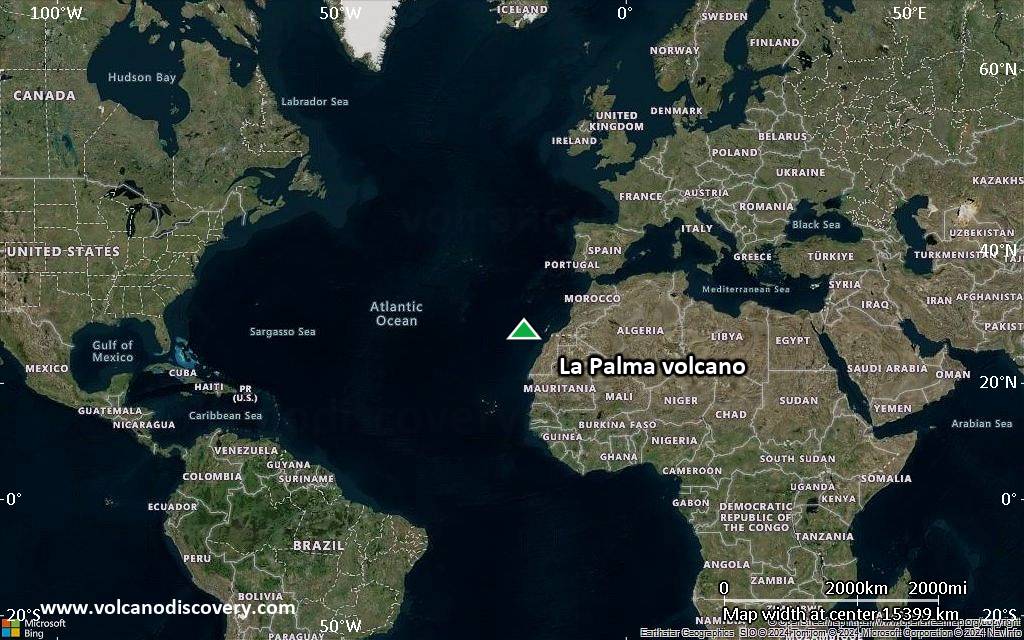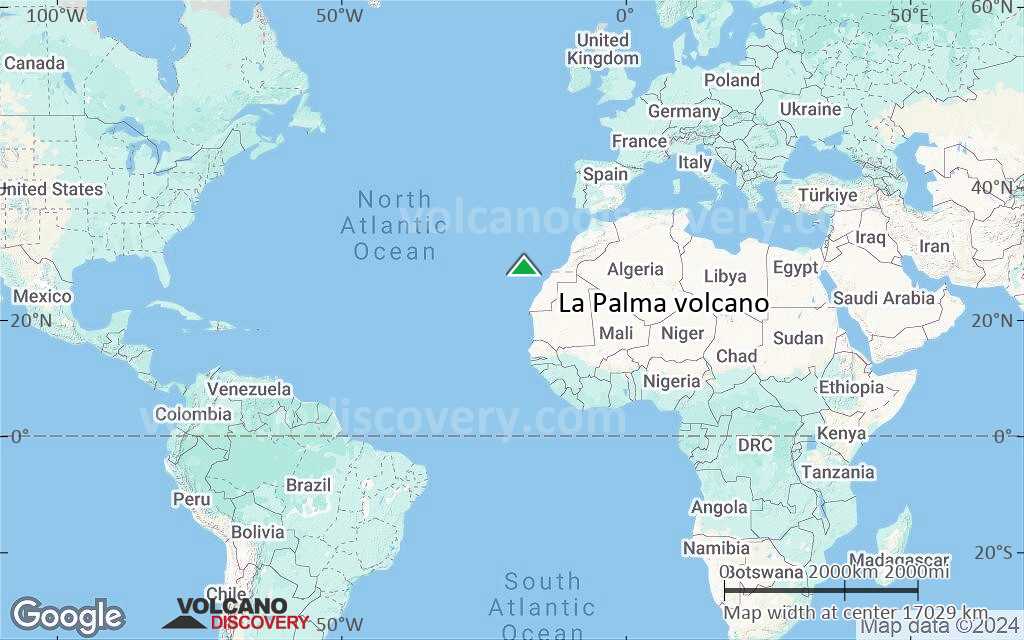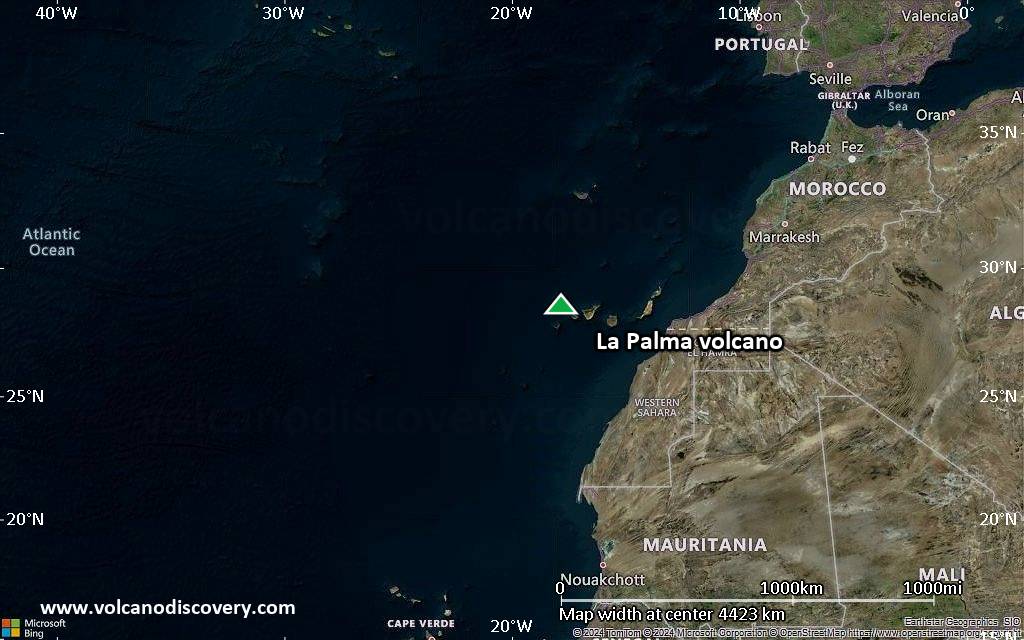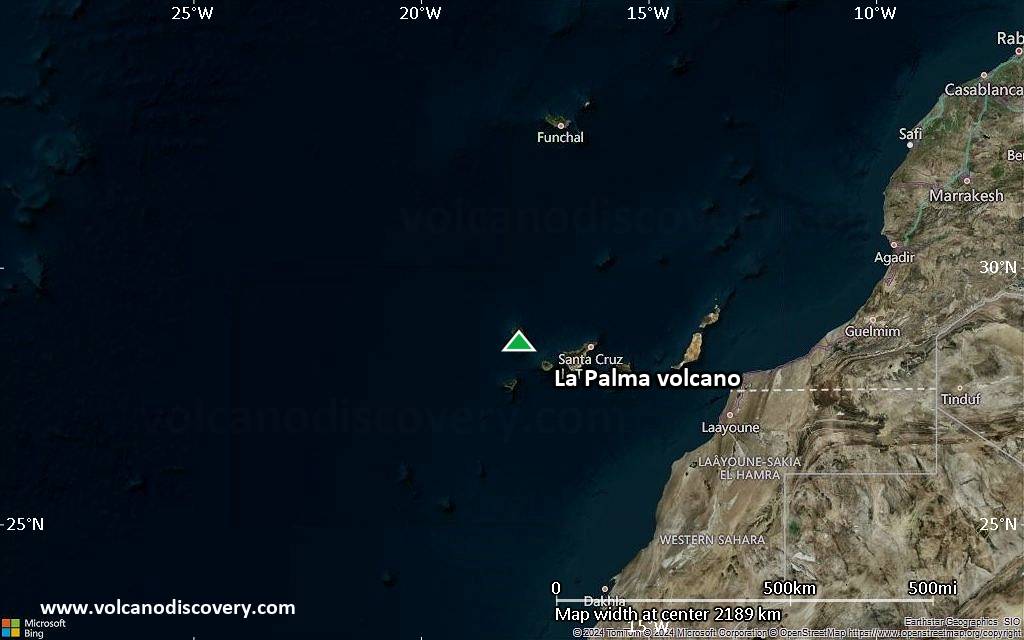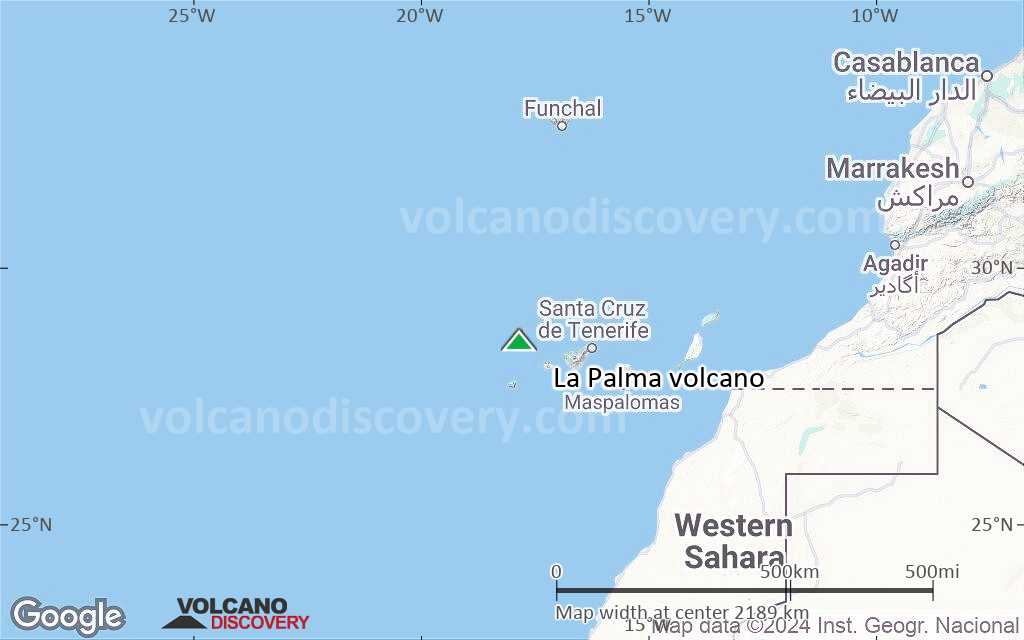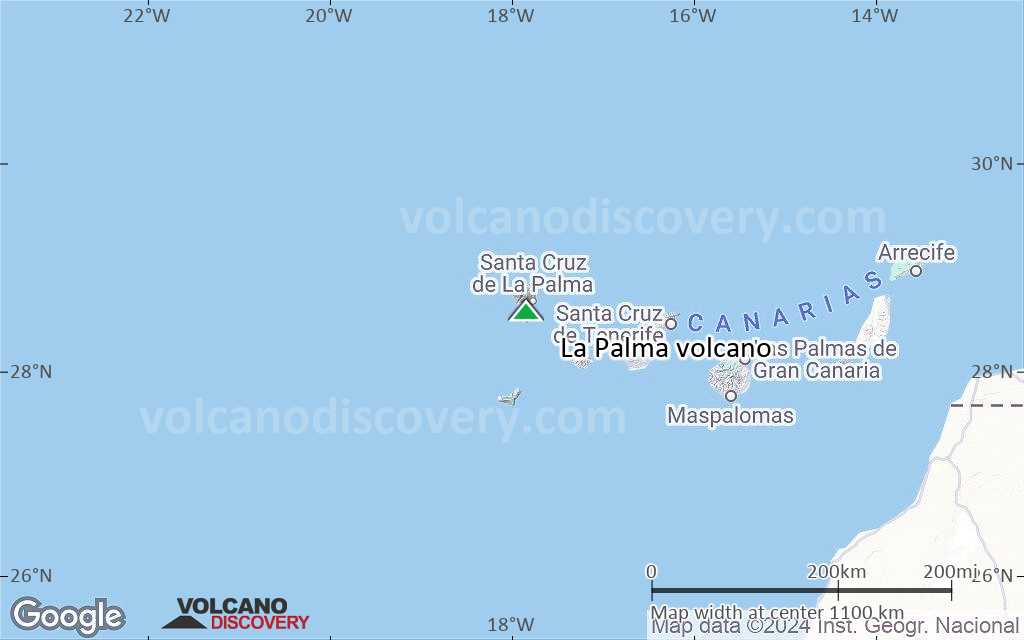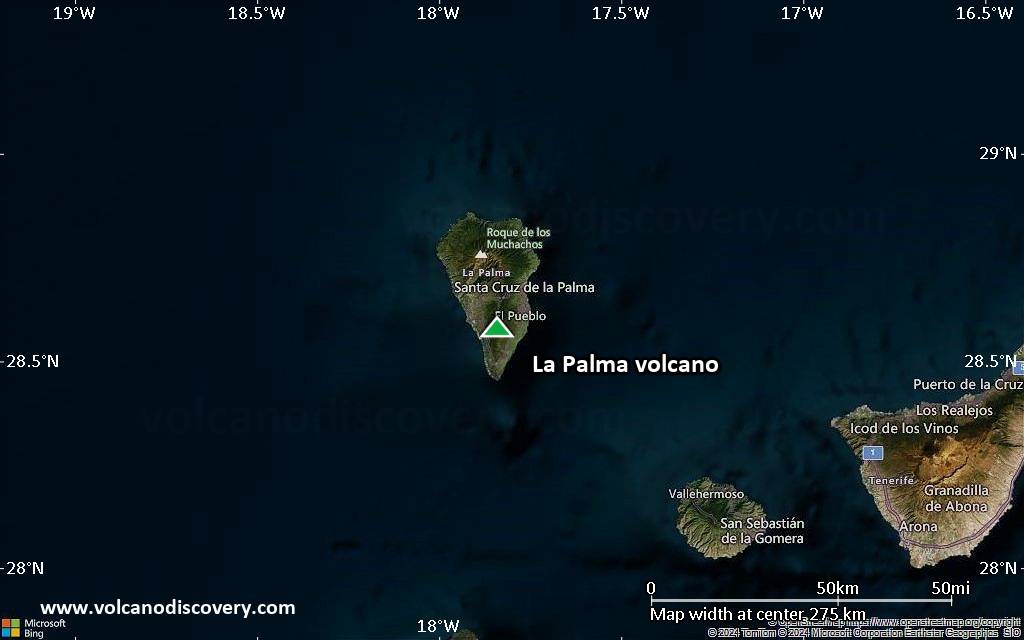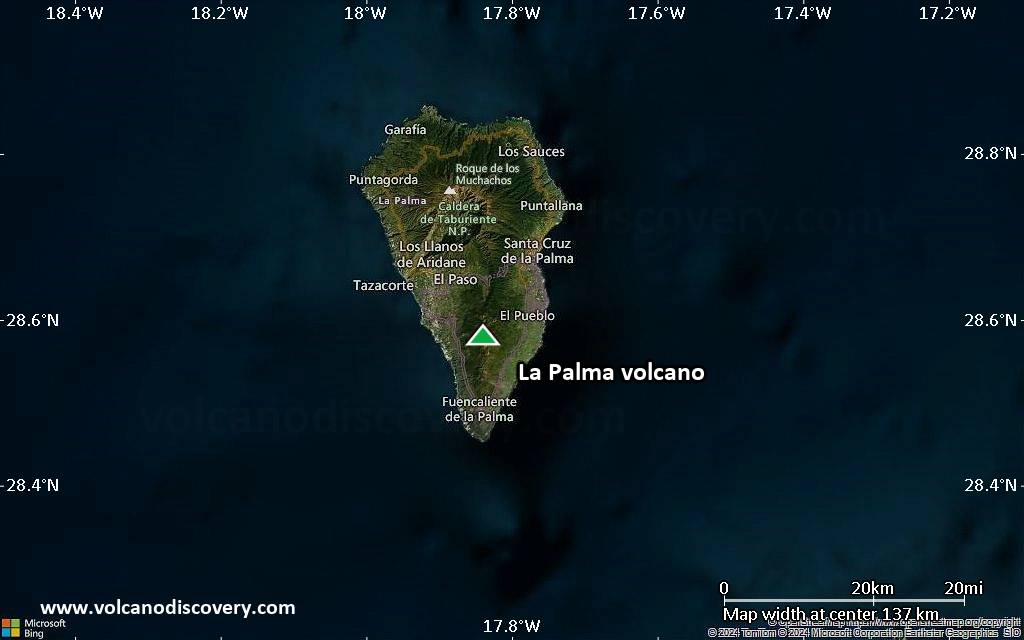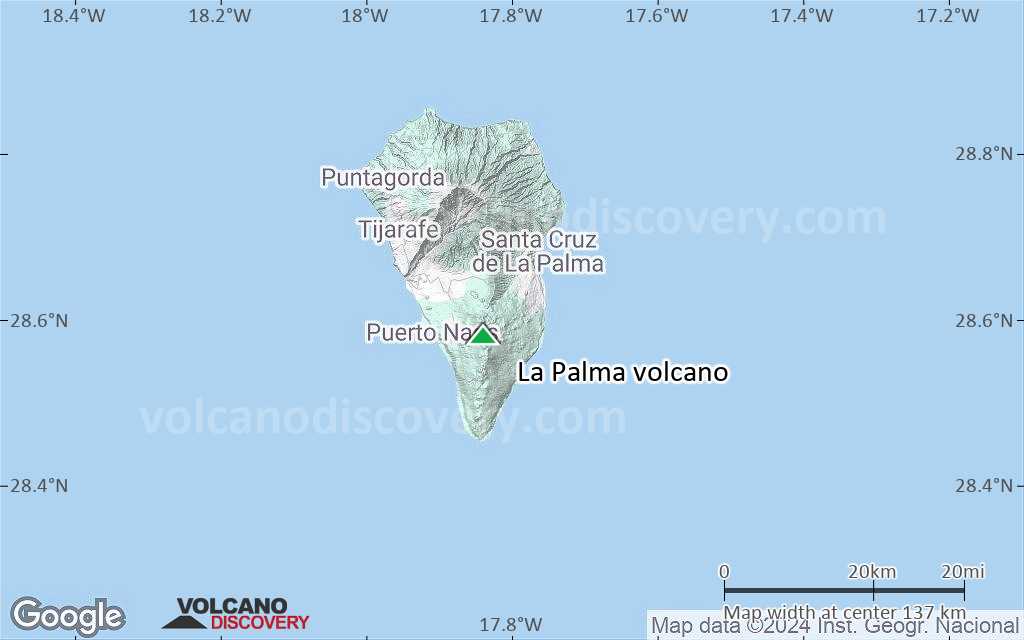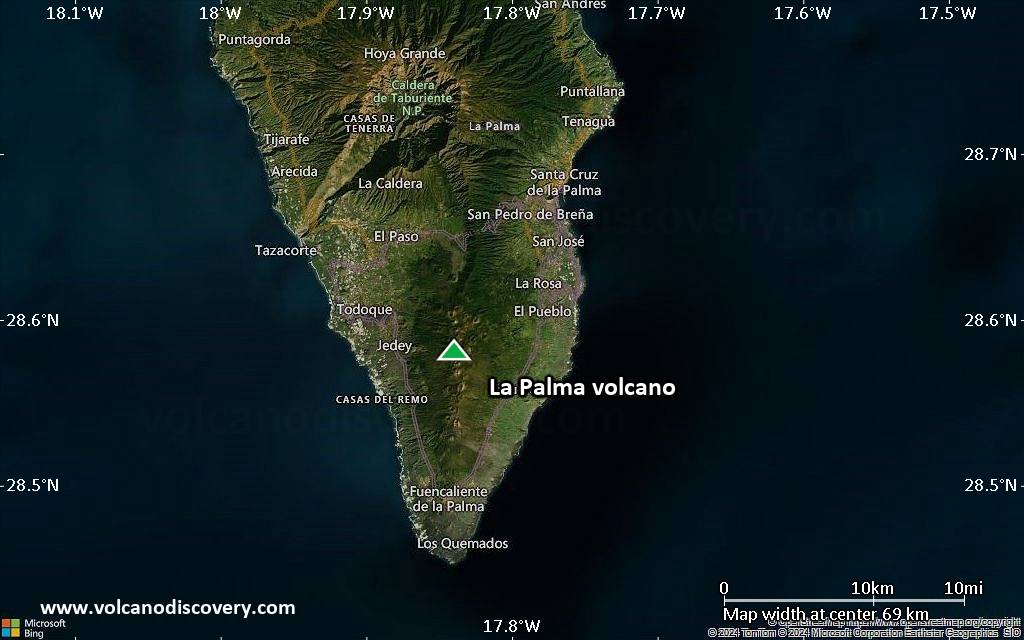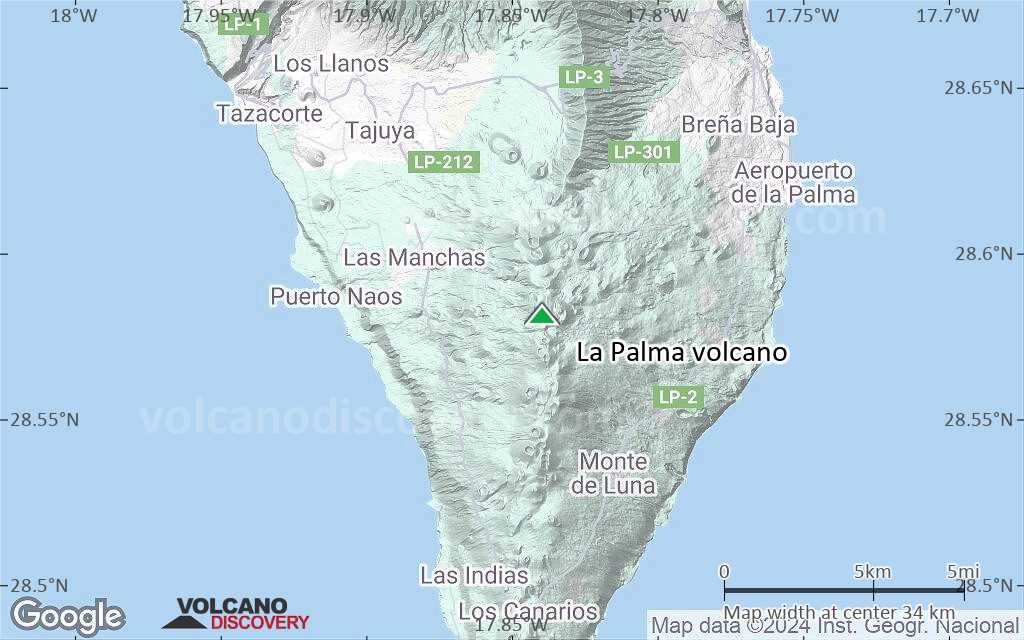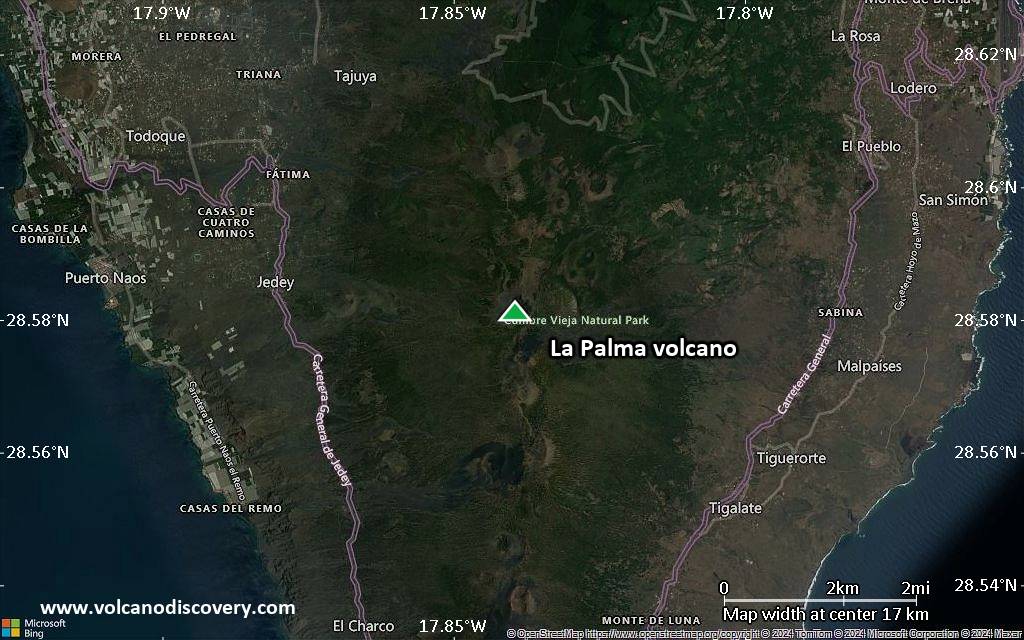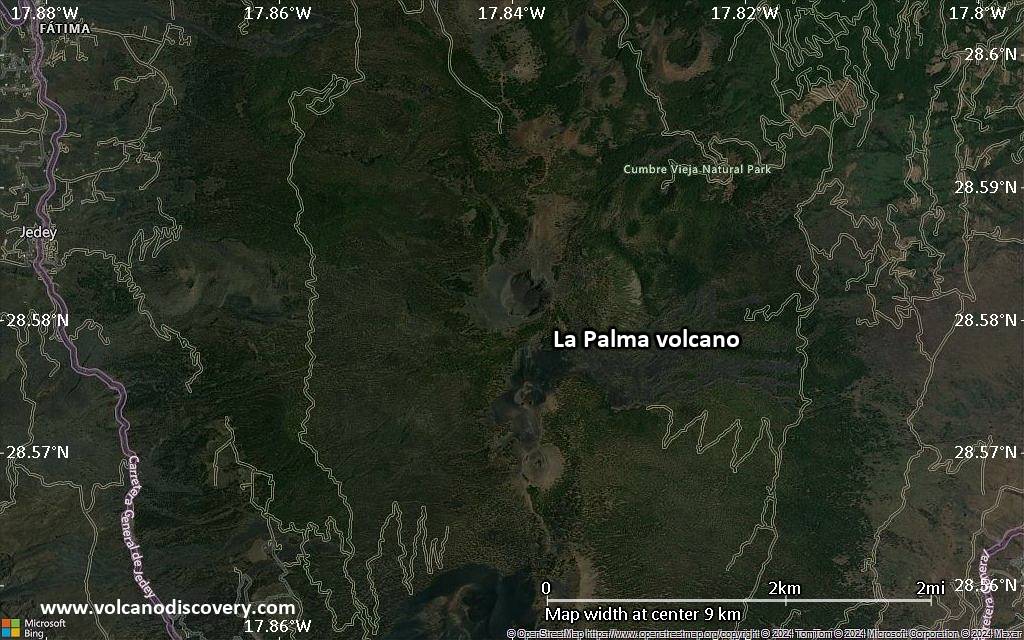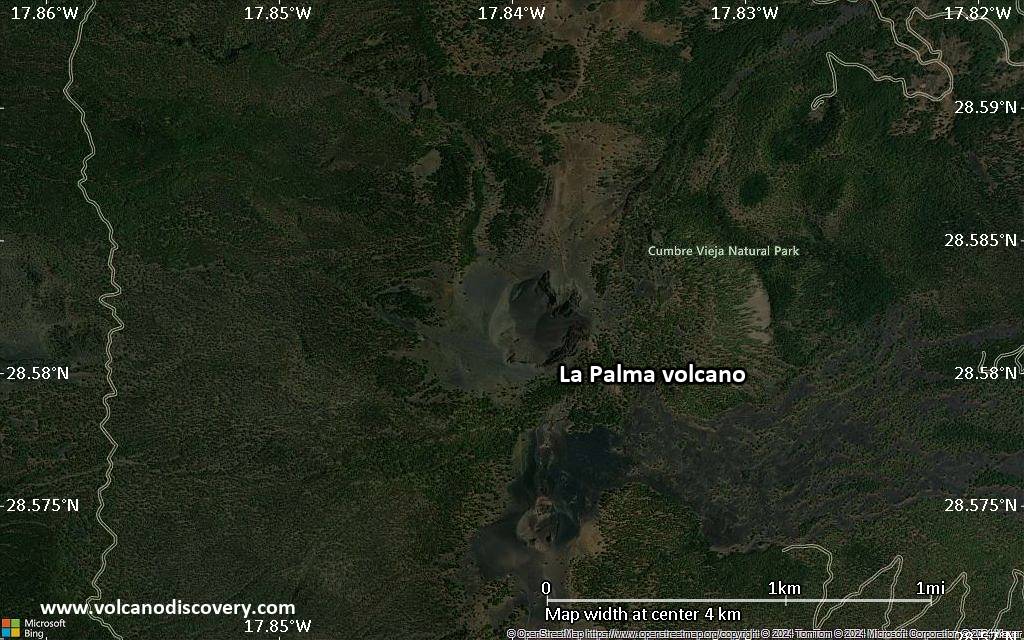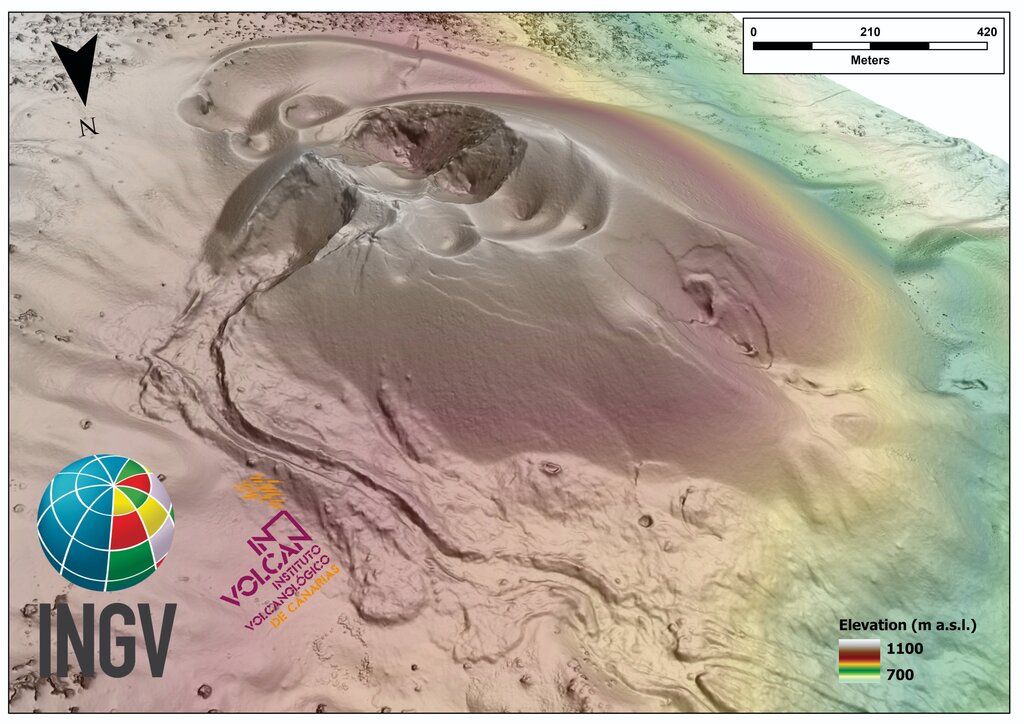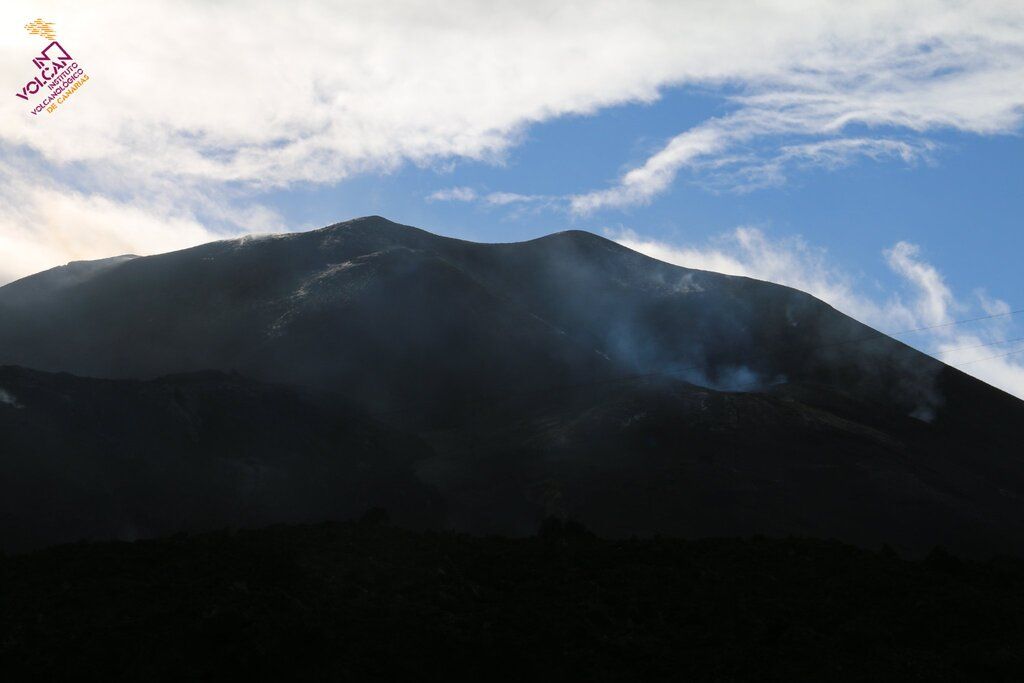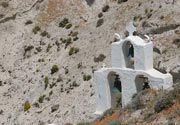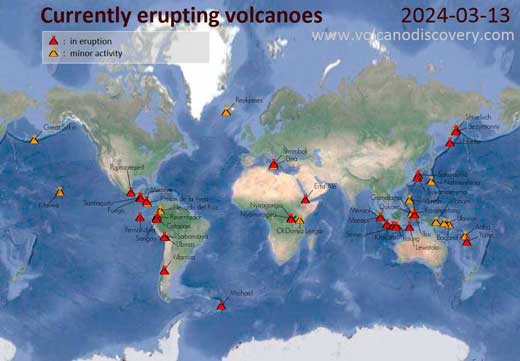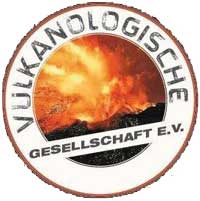La Palma Vulkan
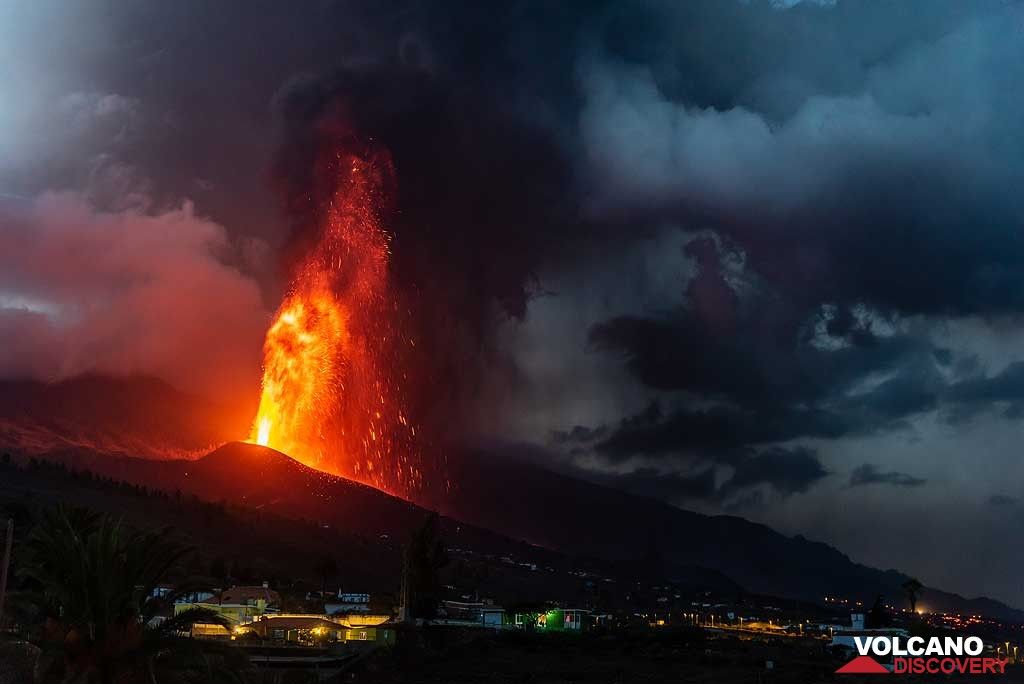
The 47-km-long wedge-shaped island of La Palma, the NW-most of the Canary Islands, is composed of two large volcanic centers.
Ausbrüche des La Palma: 2021 (Sep - ongoing), 1971, 1949, 1712, 1677-1678, 1646, 1585
Letzte Erdbeben in der Nähe
| Datum und Uhrzeit | Mag / Tiefe | Distanz / Ort | |||
|---|---|---|---|---|---|
| 18. Apr. 18:43 (Weltzeit) | 1.3 12 km | 10.4 km westlich | Info | ||
| Dienstag, 15. April 2025 GMT (2 Beben) | |||||
| 15. Apr. 11:03 (Weltzeit) | 1.0 10 km | 15 km nordwestlich | Info | ||
| 15. Apr. 00:36 (Weltzeit) | 1.3 9 km | 10.6 km nordwestlich | Info | ||
| Montag, 14. April 2025 GMT (2 Beben) | |||||
| 14. Apr. 06:47 (Weltzeit) | 2.0 13 km | 1.4 km südöstlich | Info | ||
| 14. Apr. 00:22 (Weltzeit) | 1.8 17 km | 4.9 km südwestlich | Info | ||
Beschreibung
The older 2426-m-high northern one is cut by the massive steep-walled Caldera Taburiente, one of several massive collapse scarps produced by edifice failure to the SW. The younger 1949-m-high Cumbre Vieja, the southern volcano, is one of the most active in the Canaries. The elongated volcano dates back to about 125,000 years ago and is oriented N-S. Eruptions during the past 7000 years have originated from the abundant cinder cones and craters along the axis of Cumbre Vieja, producing fissure-fed lava flows that descend steeply to the sea. Historical eruptions at La Palma, recorded since the 15th century, have produced mild explosive activity and lava flows that damaged populated areas. The southern tip of the island is mantled by a broad lava field produced during the 1677-1678 eruption. Lava flows also reached the sea in 1585, 1646, 1712, 1949, and 1971.La Palma Volcano Photos
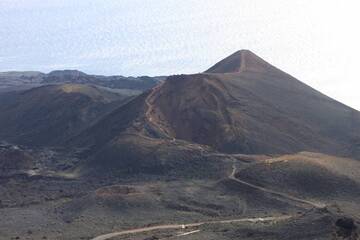



Bedeutende Vulkanausbrüche: La Palma volcano
| Datum | Hinweis | VEI | Todesopfer | Schaden | |
|---|---|---|---|---|---|
| Tajogaite eruption Hist. dokumentiert | 3 | unbekannt | |||
| 2021 Sep 19 (Ausbruch | Hist. dokumentiert | 3 | 1 | sehr schwer | Info |
| Teneguia Hist. dokumentiert | 2 | unbekannt | |||
| 1971 Okt 28 (Ausbruch | Hist. dokumentiert | 2 | 1-50 (*) | leicht | Info |
| San Juan, Llano del Banco, Hoyo Negro Hist. dokumentiert | 2? | unbekannt | |||
| El Charco Hist. dokumentiert | 2 | unbekannt | |||
| N & S flanks of San Antonio (Fuentecaliente) Hist. dokumentiert | 2 | unbekannt | |||
| 1677 AD Nov 22 (Ausbruch | Hist. dokumentiert | 2 | 1 | unbekannt | Info |
| South flank of San Martín (Tigalate) Hist. dokumentiert | 2 | unbekannt | |||
| Tahuya Hist. dokumentiert | 2 | unbekannt | |||
| Tacande (Montaña Quemada) Hist. dokumentiert | 2 | unbekannt | |||
| Nambroque II-Malforada | ? | unbekannt | |||
| El Fraile | ? | unbekannt | |||
| La Fajana (Volcán Fuego) | ? | unbekannt | |||
| L'Amendrita, Birigoyo | ? | unbekannt | |||
| ? | unbekannt | ||||
| ? | unbekannt | ||||
La Palma Volcano FAQ
+When was the last eruption of La Palma volcano?
The last confirmed eruption of La Palma occurred im Jahr 2021.
+How often does La Palma volcano erupt?
Since 1481 AD, La Palma volcano has had at least 8 historically documented eruptions. This means that it erupts on average every 68 years.
+How active is La Palma volcano at present?
La Palma volcano is occasionally active: Since 1900, it has had 3 eruptions, and been active during 3 years out of 126 as of now. This means, La Palma has been in eruption one in 42 years on average. The last eruption was in 2021 and ended 3 years ago.
+When was the largest eruption of La Palma volcano?
The largest eruption of La Palma volcano in historic times occurred im Jahr 2021. It ranks as a "vulcanian" eruption with a magnitude 3 on the VEI (Volcanic Explosivity Index) scale.
Neueste Satellitenbilder
Preis 2490 €
La Palma Vulkan Karten
